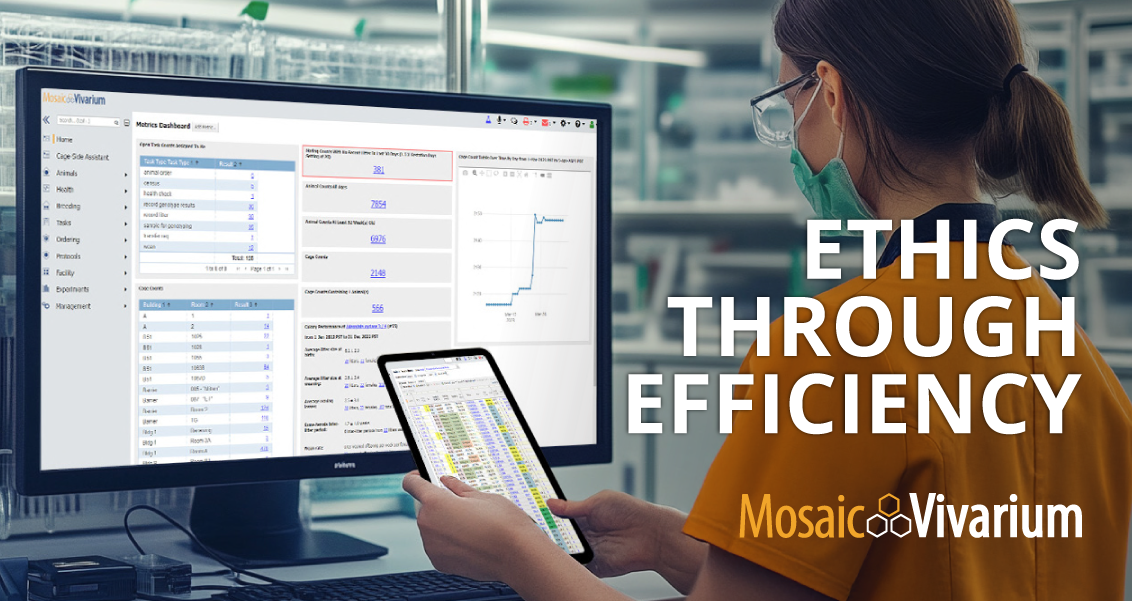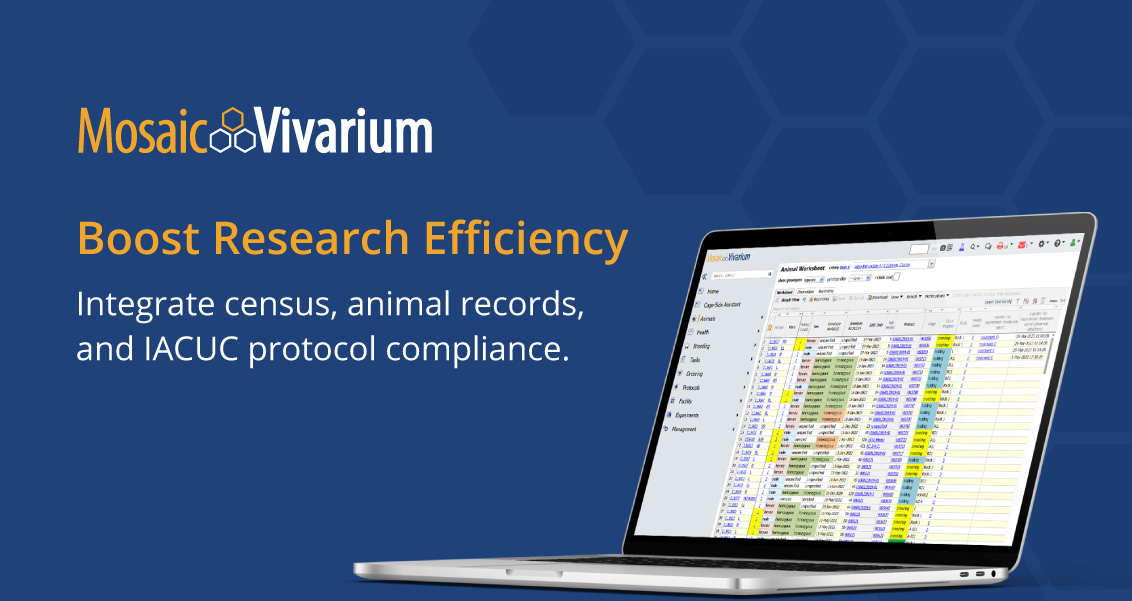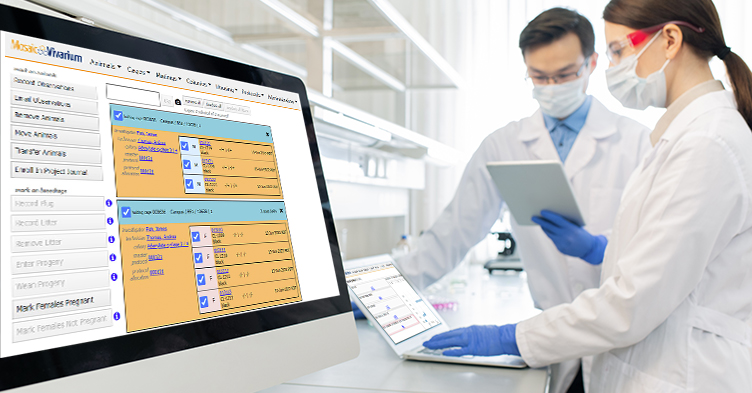Say Goodbye to Daily Census Taking with Mosaic Vivarium
Tired of daily census taking? Many new customers of Mosaic Vivarium are pleasantly surprised to learn that they no longer need to conduct this tedious task to maintain accurate cost accounting.
Traditionally, lab animal facilities relied on labor-intensive processes where technicians manually surveyed animal rooms, tallying up the number of cages on racks for each investigator. These tallies were then collated at the end of the month to generate cage-days, which formed the basis for calculating each investigator’s per diem charges.
Mosaic Vivarium transforms this approach by enabling real-time tracking of key events that impact the number of cages or animals managed for each investigator. These key events include:
- Receiving animals ordered from vendors.
- Splitting or combining cages, such as separating animals for breeding or resolving conflicts.
- Weaning offspring into new cages.
- Terminating animals for humane reasons or the end of an experiment.
Mosaic Vivarium provides intuitive screens for tracking each of these events as they happen. Real-time tracking ensures that, at any given moment, the facility’s database accurately reflects the actual state of the cages and animals in the facility.
At month end, the software can easily summarize this data, allowing for precise per diem charges, appropriately distributed across investigators.
Additionally, each cage is registered with more nuanced details, such as colony (strain) information and the IACUC protocol associated with the animals. These data give investigators a clearer picture of how their research funding is being utilized and provide insights into the efficiency of their lab’s animal use.
Since a daily tally census is no longer necessary, you may be tempted to ask whether a census is needed at all. The answer is that while a census is not technically required, it still serves an important role as a reconciliation tool. A census helps ensure that the database continues to reflect the real-world state of the facility.
For example, newly onboarded facilities often discover that some cages in the database no longer exist in the facility. This is because the person who removed the cage did not update the database. Think of this like a person who removes a book from the library without checking it out: the only solution is proper training and a willingness to comply.
The frequency of reconciliation depends on the observed error rate. If a facility experiences a significant number of discrepancies, a weekly census might be necessary at first. However, as facility operations improve, this can usually be reduced to a monthly reconciliation before generating invoices.
Working closely with technicians and investigators to address the root causes of tracking errors is key to this improvement and to reaping the corresponding labor reduction benefits.
Some facilities equipped with RFID hardware ask how Mosaic Vivarium interacts with their technology. These facilities are well-positioned to benefit even more by using the RFID hardware to instantly report all cages present in a location.
This eliminates the need to manually scan barcodes on each cage. Although RFID systems can instantly report the contents of rooms, technicians and facility managers must still address any discrepancies to ensure data accuracy.
Ultimately, the goal of Mosaic Vivarium is to eliminate frequent, tedious scanning and replace it with a more efficient monthly reconciliation process. This allows lab animal facilities to focus on improving data accuracy, reducing errors, and managing operations more effectively.
Ready to learn more about how Mosaic Vivarium can help your facility?
Schedule a free demonstration today!


















